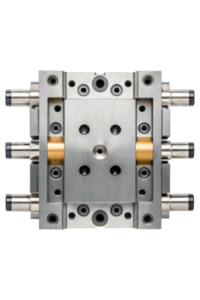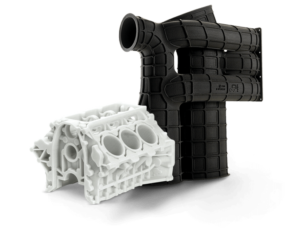Quickparts Resources
Materials Guide
We offer an extensive selection of more than 200 engineering-grade materials for our CNC, Injection Molding and Additive Manufacturing services. Most are suitable for both prototyping and production.
Prototyping and Manufacturing Materials and Finishes
To review and compare the mechanical and physical properties of the range of plastics, metals and elastomers we offer, click on your preferred process.
CNC
Computer Numerical Control
High-precision plastic and metal parts made exactly as designed using 3-, 4-, and 5-axis milling machines for all industries including aerospace, medical, and industrial.
Injection Molding
Consistent, cost-effective prototyping to high-volume plastic parts in a diverse range of materials and finishes for every industry. Custom mold creation for prototyping and production.
SLS
Selective Laser Sintering
Prototypes and functional end-use parts with superior durability, heat resistance, flexibility, and dimensional stability. SLS eliminates the need for support structures, making it a cost-effective option.
DMP
Direct Metal Printing
Complex, high-performance metal parts that can incorporate intricate details or comprise integrated assemblies. Design freedom, exceptional precision and strength at an affordable cost.
DLP
Direct Light Processing
Ideal for small, complex parts and low-volume needs. Great alternative to injection molding. Advanced resins, including rigid and elastomeric polyurethanes, create precise, functional parts faster than most 3D printing processes.
Cast Urethane
Ideal for medical, automotive, and consumer product industries, this cost-effective rapid manufacturing method utilizes 3D printed masters and soft tooling to produce high-quality parts and prototypes in rigid plastic, rubber, and silicone.
SLA
Stereolithography
Prototypes and functional end-use parts with superior durability, heat resistance, flexibility, and dimensional stability. SLS eliminates the need for support structures, making it a cost-effective option.
Finishing Options
Choose from a wide selection of finishing options for your parts. Finishing can provide customization, improve surface quality, improve cosmetic appearances and even strengthens parts. Your choice of finish can be selected when ordering your parts through our QuickQuote portal, or when you submitting your manual quote request.
Download our 3D Printing MATERIAL FINISHES GUIDE (Europe) here.
CNC
Computer Numerical Control
Our standard surface finish for cnc machining services is 63-125 rms, however we can grind or polish the part to 4-8 rms.
- Bead blasting
- Electro polishing
- Heat treatment
Sand blasting
Vapor polishing
Injection Molding
All available for production
Cast Urethane
Functional
Show
Clear (Polished)
SLS
Selective Laser Sintering
- Standard (Uncoated)
- Standard (Coated)
- Painted
- Dyed
- Custom
DMP
Direct Metal Printing
- Anodized
- EDM
- Grinding
- Heat Treated
- Milling
- Polished
- Turning
DLP
Direct Light Processing
- Natural
- Standard
- Paint Ready
- Painted
- Custom
SLA
Stereolithography
- Natural
- Standard
- Paint-Ready
- Painted
- Quick Clear
- Clearpart
- Custom


